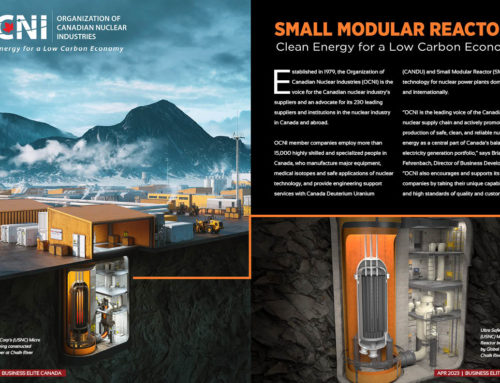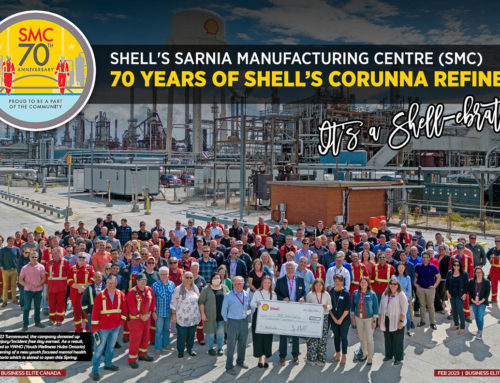
In their four short years as a junior exploration company, Canadian Orebodies has quickly grown to capitalize on Canada’s far north iron ore deposits. Gordon McKinnon, the company’s young CEO, has been with Canadian Orebodies since the beginning in 2008. Starting as a spinout from Baltic Resources, Canadian Orebodies has emerged as a key figure in iron ore exploration. In June 2011, the company acquired the Haig Inlet project, an iron ore property on the Belcher Islands in Hudson Bay, Nunavut. McKinnon describes the region as a “very new exploration play area”. The project quickly became Orebodies’ flagship project due the high quality of the asset and its strategic location.
“It’s our sole focus right now,” says McKinnon.
The company recently announced that they are planning on spinning out all the non-iron ore assets into a new company to allow Canadian Orebodies to be branded strictly as an iron ore company.
In February, the company released its NI 43-101 Resource Estimate for Haig Inlet. It was only last June when the company acquired the project and by the end of July they had three drills working on the property.
“We drilled just over 9 100 meters in 2011. That work was to follow-up on the historical work done by Belcher Mining Corporation Ltd. in the 1950s. There was a historical resource on the property, but that could not be relied on. We executed a drill program last summer designed to confirm the iron resource under NI 43-101 standards,” explains McKinnon. The result was an indicated iron resource of 230 million tonnes at 35.17% iron, and an additional inferred iron resource of 289 million tonnes at 35.47% iron.
Since acquiring the project, Canadian Orebodies has developed the asset very quickly.
“Being up in Nunavut, the most favourable exploration season is during the summer months,” McKinnon says. “So after one summer of work, we’ve already drilled over half a billion tonnes of iron mineralization, which is a very substantial deposit.”
The deposit remains open to the north and south for future expansion and McKinnon says they are planning to commence drilling again this year by mid-June.
“We’re going to be targeting three other highly perspective areas on the island and we’re going to be doing widely-spaced exploration drilling on all three of those targets,” says McKinnon. “That’s phase one of the program. Whichever target is the most attractive – and by that we mean closest to the surface and with the best grades and thickness – we’ll go back to it for infill drilling and establish another NI 43-101 resource. That’s our goal for the summer.”
Although working in a remote area such as the Belcher Islands does come with its unique set of challenges, the Belcher Islands themselves are surprisingly easy to get to, with six commercial flights a week servicing the tiny airport at Sanikiluaq. Even still, getting materials and people to and from the island can prove to be a tricky endeavor as weather, of course, plays a factor.
“In the summer, we do get a fair bit of fog, which can hamper our ability to resupply the island,” says McKinnon. The drills, which are all helicopter-supported, are difficult to move from each location if there is fog, which can last up to several days, ultimately limiting an already short drilling season.
“It kind of puts the pressure on trying to get your drilling production as quickly as possible,” says McKinnon. The company came up with a solution, though. They determined that there is less fog in June and early July and have decided to focus their work within this time period this year in order to maximize their results.
So why iron ore? Canadian Orebodies echo similar sentiments as other exploration companies that are involved with the same metal, which is predominately used for steel. The market for iron ore is growing rapidly. Developing countries such as China and India are becoming major drivers pushing expansion in the iron ore sector. China is currently both the largest consumer of iron ore and the world’s largest importer of iron ore.
“They are looking to relinquish the control the ‘big three’ have [over iron ore]. So what they are looking to do by 2015, is to have at least 50 percent of the iron ore they consume coming from projects they own,” explains McKinnon. This way, they can easily resupply their needs at costs that they can determine themselves.
What does this means for Canadian mining companies that deal with iron ore? China will be purchasing a lot of deposits and projects over the next several years.
“It’s a very aggressive regime that they are on. As well, iron ore prices have been holding up very well in the market,” says McKinnon. According to McKinnon, in mid-April iron ore hit a six-month high at 149 dollars per tonne. Since then, it’s been holding quite strong. Some larger producers say that it could even go back to 185 dollars per tonne. For McKinnon, this merely proves there’s a strong desire for iron ore due to the need for steel production in developing nations.
The location of the Haig Inlet Iron Ore Project alone is enough to make it unique and
McKinnon sees this as their biggest advantage. As an island-based project, the company can use direct ocean shipping as opposed to railroad, which is a lot more expensive. This is especially the case when dealing with bulk commodities such as iron ore.
“You’re moving millions of tonnes of ore a year and if you don’t have to put it on a rail car to get it to the port, you’ll be saving a lot of money,” says McKinnon. Many other iron ore exploration companies, such as those that are primarily in the Labrador Trough region, have to use rail and use much of their budgets transporting their resources. In some cases, the capital expenditures to build the rail infrastructure alone easily top a billion dollars.
Canadian Orebodies began drilling at Haig Inlet because of the historical resource it boasted, and the project eventually expanded.
“It’s just targeting the area that’s easiest to open to mining. There’s tremendous potential here, even beyond the Haig Inlet deposit itself. We’re going to show that potential by targeting these three other areas this summer,” says McKinnon.
For many of their needs, Canadian Orebodies uses Expedition Helicopters and Logistics and several different companies that operate under the Expedition brand. Cyr Drilling did all of the company’s drilling last year and is contracted to do the drilling this summer as well.
Canadian Orebodies’ budget in the NI 43-101 is just over 5 million dollars, which includes a 25 percent contingency. This is yet another characteristic of the company that sets them apart from others – they are relatively cheap. Most other mineral exploration companies operate with much larger budgets, but Canadian Orebodies always strives to maximize the value of their dollars. To that end, Canadian Orebodies also plans to operate their drill program out of the community of Sanikiluaq this year, which is near the Haig Inlet project and will further assist with cost savings.
McKinnon hopes that within five or ten years, Canadian Orebodies will no longer be around. If you think he’s being a pessimist, it’s really quite the opposite.
“Ultimately we are an exploration company. Our strength is in going out and finding mineral deposits, then we prove it up and take it to a level where it will be interesting enough for someone else to take it over or take it on. We’re not really in the mine-building business,” he says.
To put projects into production requires significant capital – ranging from hundreds of millions to well over a billion dollars. What McKinnon hopes is that Canadian Orebodies can advance the Haig Inlet project to the level where it’s attractive enough to partner off with someone or ultimately sell the project somewhere down the road.
McKinnon describes Canadian Orebodies’ story as “new and unique, but also unknown in the iron ore space.” He’s confident that spinning out the other assets and branding the company as purely focused on iron ore will work in the company’s, and potential investors’ favour.
“The story tells very well. We have strong institutional ownership. We have excellent shareholders who believe in the long-term growth of the project and I think it’s going to be a real gem in the marketplace.”





